Pemmican- the ultimate survival food. A gift from First Nations people.
Pemmican- the ultimate survival food. A gift from First Nations people.
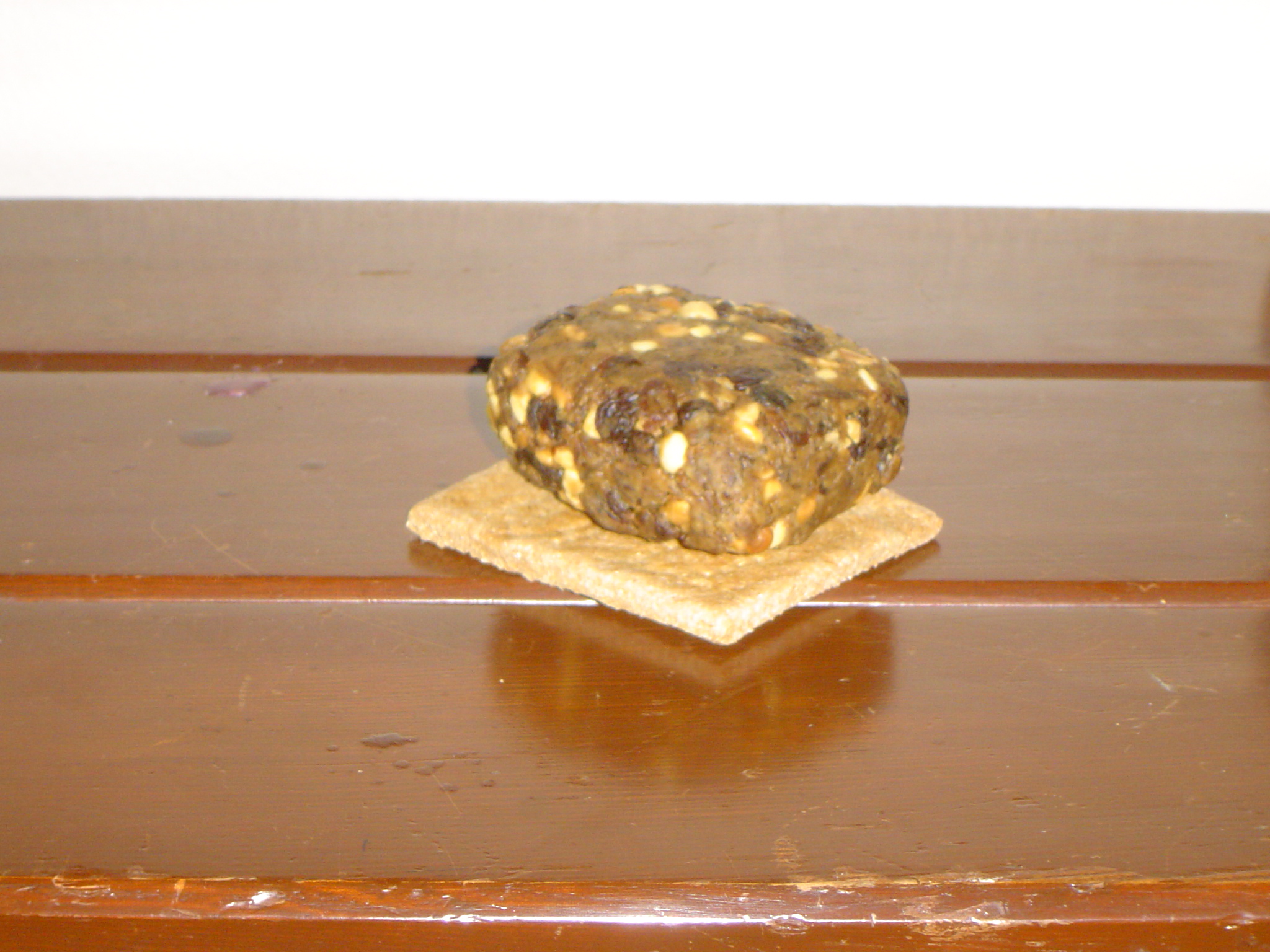

Pemmican was a staple of the Plains people’s diet with the name originating from the Cree word, “pimikan”, or ‘manufactured grease’. Pemmican was made from buffalo meat, although antelope, deer, elk and moose were also used. It was a mixture of dried meat pounded to a powder, a quantity of rendered fat, Saskatoon berries or choke cherries, and sometimes peppermint leaves. The whole mixture was stored in parfleches, or skin bags, where it could be stored indefinitely. Pemmican was portable and highly nutritious with 1 kilogram equaling 5 kilograms of fresh meat. It was one of the most important contributions native people made to the survival of the Europeans through the harsh Canadian winters.
How to Make Pemmican
To make pemmican the Indians began by cutting meat into thin slices or strips and drying it either in the sun or over a fire. After the meat was dried, it was spread out on a stone-headed mauls and then pounded. This pounded meat was called “beat meat” by the natives. “Beat meat” was then mixed with melted fat and marrow. One early European observer noted that 40 pounds (18kg) of fat were added to 50 pounds (22.6kg) of beat meat. Sometimes a paste made of fruits or berries were added to this mixture.
Pemmican was stored in folded rawhide containers called parfleches. They were flat which made them easy to store and transport. Parfleches were greased along their seams to keep out air and moisture. Pemmican could therefore be kept fresh for years. Three-quarters of a pound (.34kg) of pemmican a day was a sufficient ration of food, although a hard-working traveler might eat between 1 and 2 pounds a day.
“… to make this essential food, the women would cut buffalo meat into very thin strips and hang them on hooks or a rack over a slow, smoky fire. The fire was used mainly to keep flies off the fresh meat. After a day or two the fire was discontinued and the meat was allowed to dry in the sun and wind. Three or four times a day the women would crack the meat open to allow the outsides of the strips to dry. After the drying process, which took about a week, the meat was broken into small pieces and put inside a flour sack. The women then pounded the meat into powder. This powder was mixed with dried berries, and melted buffalo fat was used to bind the substance together into balls. The pemmican balls were then placed into bags made of green (untanned) buffalo hide, and sewn up tightly. A bag of pemmican, made properly, could be cached in the ground for several years and still remain usable.
Rubaboo is the name for a stew made of pemmican and any wild vegetables at hand. Boiled in a pot of water, the chunks of pemmican would fall apart. Additions – the likes of onion, turnip, asparagus, parsley, sage, bullrush root, cattail heads, dandelion root, wild parsnip, wild carrot, mushrooms, pine nuts, day lily roots, or wild rice, would turn it into an appetizing stew.
http://cyndisummerbeaver.blogspot.com/2008/05/bearskin-lake-city-compared-to-summer.html
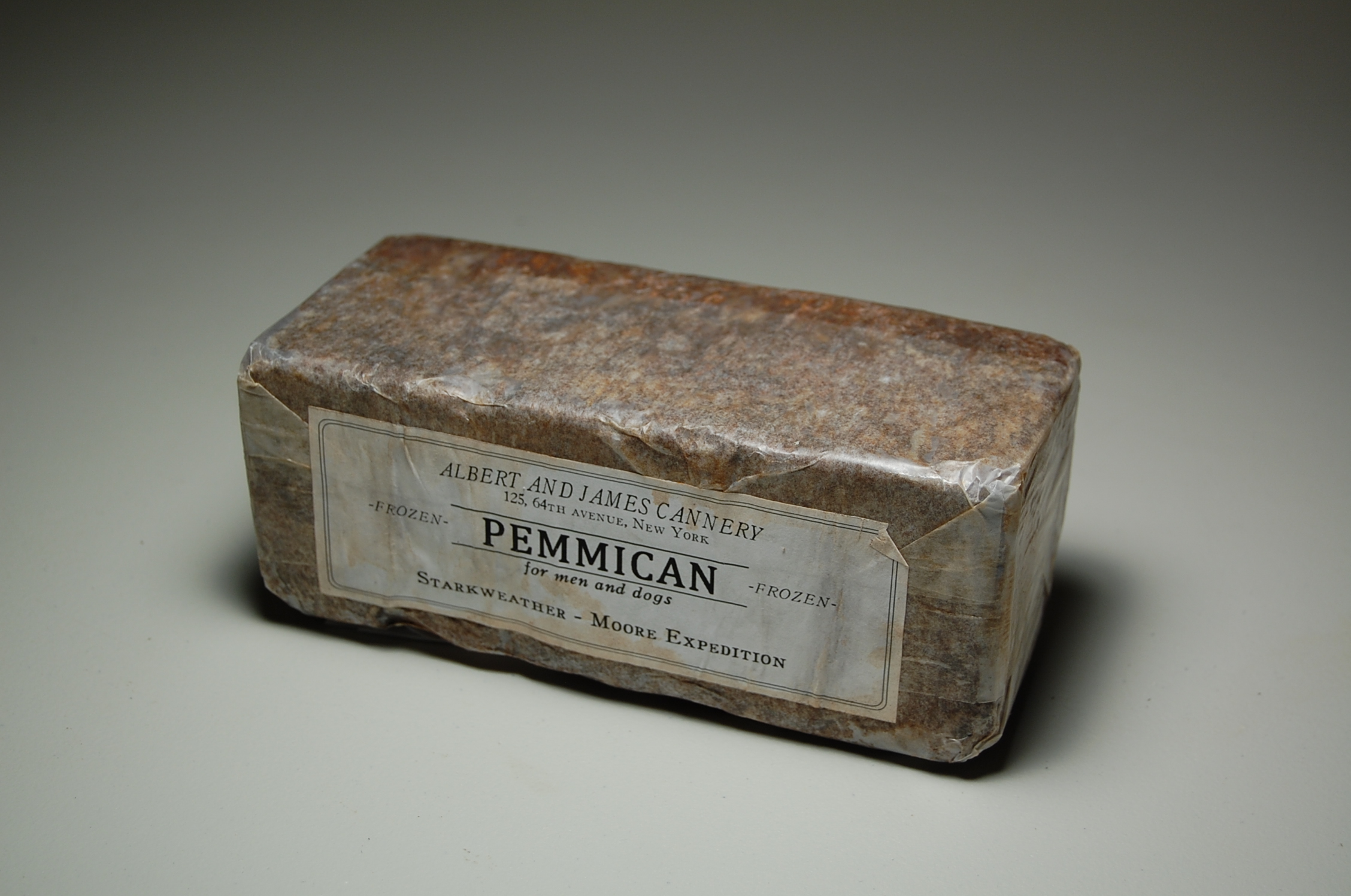
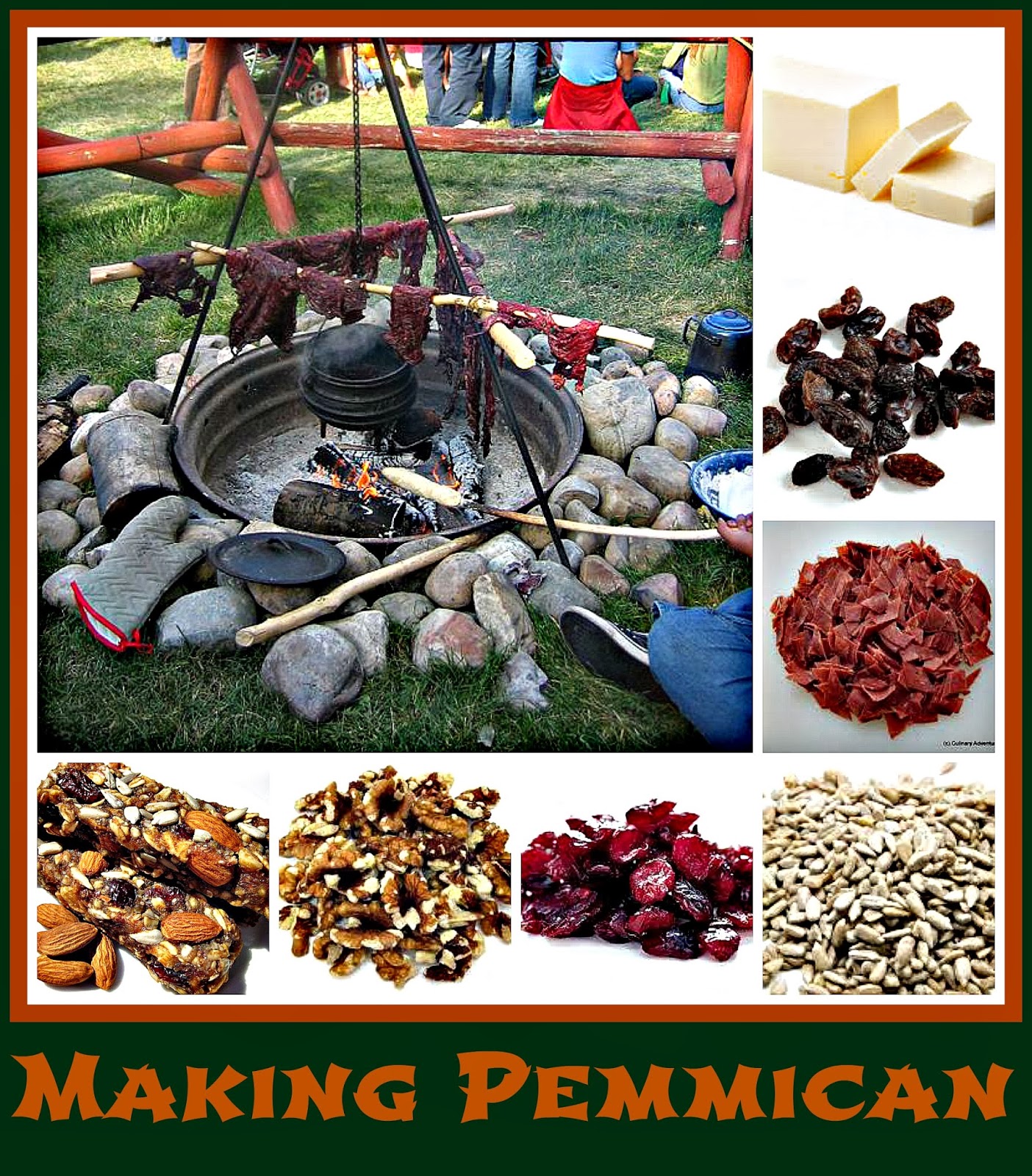
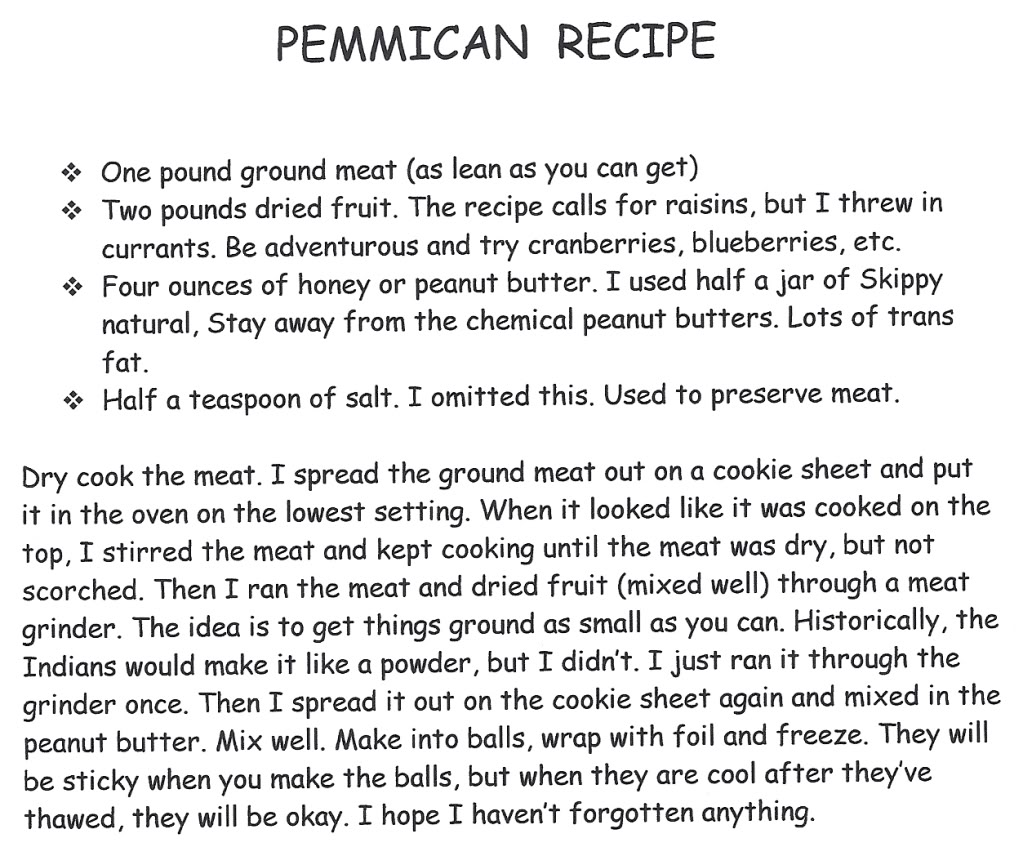
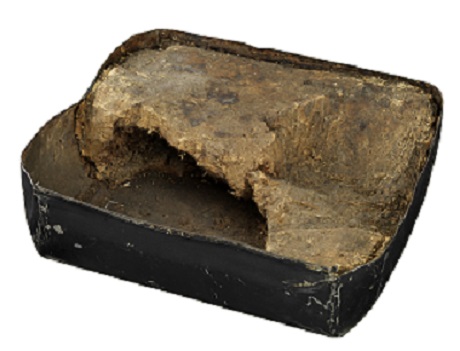
Tinned Pemican AAA4305
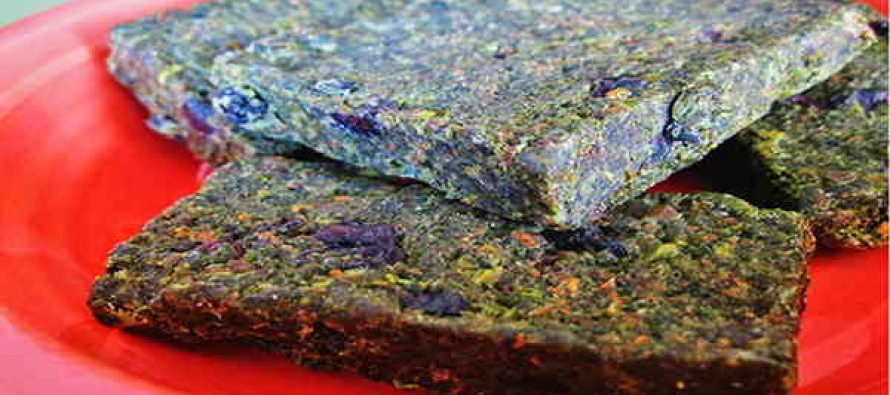
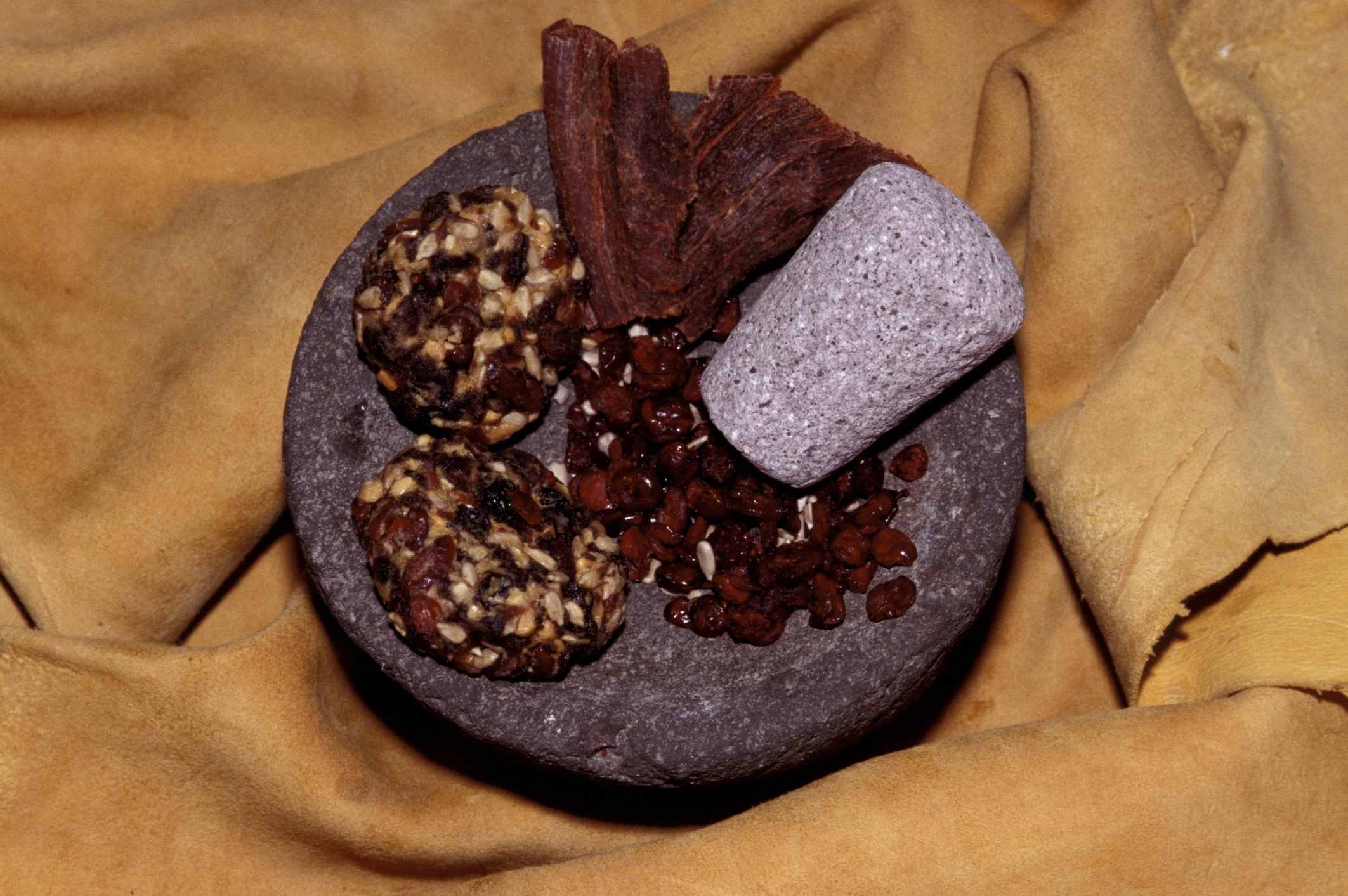
pounding pemmican



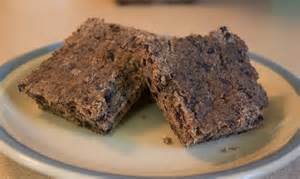







Interact with us using Facebook